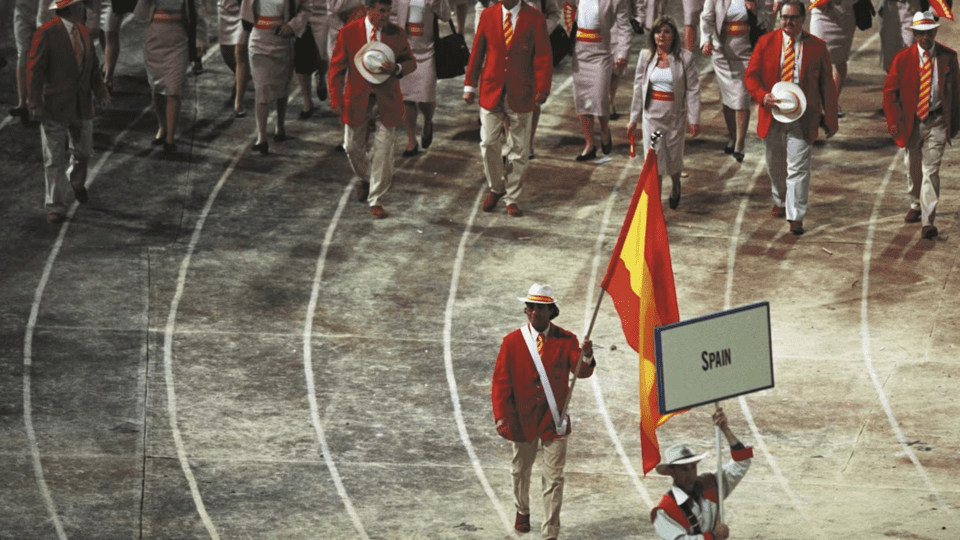Peru is a country of mountains, coastal regions and jungle. Before the arrival of the Spanish conquerors in 1572, Peru was the heart of the Inca empire. It therefore has a very rich and eventful history. Nowadays Peru is a republic with almost 32 million inhabitants. Water polo is also practiced in that country on the west coast of South America. We spoke with Vicente Hinojosa, former goalkeeper of the National Team and current TWPC member of CONSANAT, the South American Federation.
Hinojosa played water polo from 1989 to 2006. As goalkeeper and captain of the illustrious Campo de Marte from Lima, he became several times national champion and made it to the National Team. He has also earned his spurs as the former president of Campo de Marte and a TWPC member of the Peruvian Federation. And he is still very involved in water polo. He is now committed to the sport in an international way. He is TWPC member of CONSANAT and UANA – ASUA (the American Swimming Aquatics Union).
We talk with Hinojosa at a bad time. Competitions and training in Peru have been stopped due to the Covid-19 pandemic. Only the players of the National Team are still in training.
How is the competition in Peru normally structured?
“Water polo is played in four cities. In addition to the capital Lima, it is played in Trujillo (550 km above Lima), Callao (beside Lima) and Arequipa (1000 km south of Lima). In total there are about 500 water polo players registered at the Peruvian Federation. Due to the long distances, the league is initially divided into several regional leagues. It ends in a national championship that is held in 3-4 days.”
“The following five clubs play in the highest league: Campo de Marte, Aquatica Sports Center, Regatas Lima, Draga Waterpolo and Trujillo Olympic Club. In addition to the national competition, these teams also participate in invitational tournaments with clubs in the South American area. Regatas Lima and Campo de Marte also play in the South American Champions League. These clubs are the most successful ones in the history of the country. They alternate the championship and mutual matches usually end very close.”
“There are also competitions for the youth: U11, U13, U15, U18 and U20.”
What are the greatest achievements of the national team?
“We have medaled twice in the South American Championships. In 1938 we won silver and more recently, in 2013, we won bronze. We won the Copa del Pacifico twice (1987 and 2011). Peru also participated in the World Championships Under 18 in 2012 and 2014. That is of course also a great and unique achievement. Finally, we organized the Pan American Games in Lima in 2019. We are quite proud of that.”
Who are the most famous water polo players in Peru?
“In the past, we had Amador del Solar. He was a very smart player, really fast and a quick shooter. He became champion in the Mexican League. And don’t forget the mythical Humberto “the submarine” Ticona, National Team center from Arequipa. He is huge, played always under the water, used both hands and always shot without looking at the goal. Nowadays Diego Villar and Eduardo Grandez are the icons. They’ve played in the Spanish League. Sebastian Pastor still plays there for CN Hospitalet.”
“We also have some female talents. Our National Team goalie Alyssa Barnuevo plays in the NCAA in The States for UC Berkeley and Lopez Deza and the Rodriguez sisters play in Spanish League.”

How “big” is water polo in Peru compared to other sports?
“Soccer and volleyball are the most popular sports in Peru. Compared to them, water polo is very tiny. Water polo hardly gets any attention in the media. Only in Arequipa in the south of Peru there is more attention, but unfortunately, no more tournaments have been organized there in recent years.”
“A number of coaches receive a salary, but most players just have to pay a contribution, mostly between $ 40 to $ 120 per month. Relatively speaking, that makes it quite an expensive sport. Only in Callao players do not have to pay because they are subsidized by the local government.”
“Although the players practice it on an amateur base, that doesn’t mean they don’t train hard. In the senior league, the players train five days a week, 2-3 hours a day.”

What about the future of Peruvian water polo?
“First of all, I hope that corona-crises will end soon. We stopped playing on March 15th. That is way too long ago…”
“To improve the level of water polo in Peru I think we need to start our regional and national leagues and national championships in other cities than Lima. The Pan American Games are very popular here. That is a chance for water polo. A lot of kids want to play it. We need to use this “momentum”. And our National Development Program needs to return more stronger. This was stopped four years ago.”
“There is also an opportunity to extend women water polo. They play competition with five teams, but the development of women’s water polo is going very fast. The goals for the coming years are to grow the number of players and clubs, especially among the youth. And we want to qualify for the Pan American Games in Santiago (Chile) in 2023.”
“Last but not least, it’s my ambition to organize some special events when I get back to the Peruvian Federation: a tournament in Cuzco, the former capital of the Inca’s empire, and a tournament in the Amazon river in the middle of the Peruvian jungle. When these times come I will let Total Waterpolo know for sure!”
More information about water polo in Peru? Follow them on Facebook and Instagram.






